Last week I spent some time at our family beach house on Puget Sound, near Olympia, Washington. In addition to good times with family, amazing sunrises and sunsets, time in and on the water, I had two experiences that particularly brought home to me the artistry and resilience of creation—as well as the effects our actions can have on this rich beauty.
By Land
The first experience came while working around the cabin. "Old Orchard," an early 1900's building in the style of the Maine beach houses from my grandmother's childhood, has a sloping wooded hillside behind it. The tree canopy primarily consists of tall, old Douglas Fir, Madrone trees, and cherry trees, and the undergrowth is increasingly dominated by English ivy, blackberries, poison oak, and a twining invasive vine I have yet to identify, which is pictured below (suggestions, anyone?).

One of my daughters and I have worked to rid the tree trunks of ivy for a while now, but with ivy covering the ground as well as the trees, this isn't easy, especially when the ivy hides a nest of ground dwelling bees. I still avoid the corner of the cabin where my daughter stepped on the ivy with a walking boot and was swarmed by angry bees while we tried to hose down her foot and get the boot unstrapped.
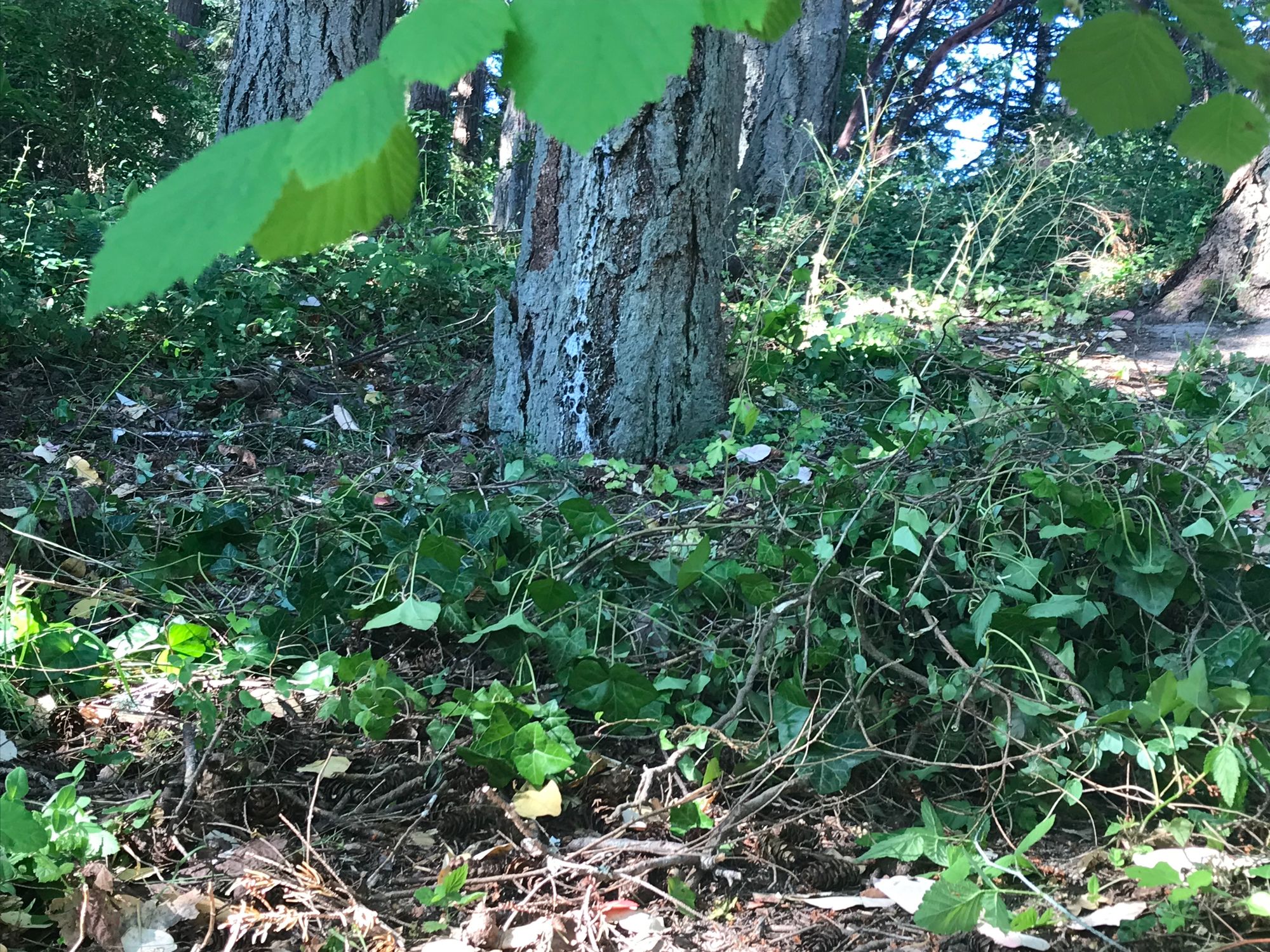
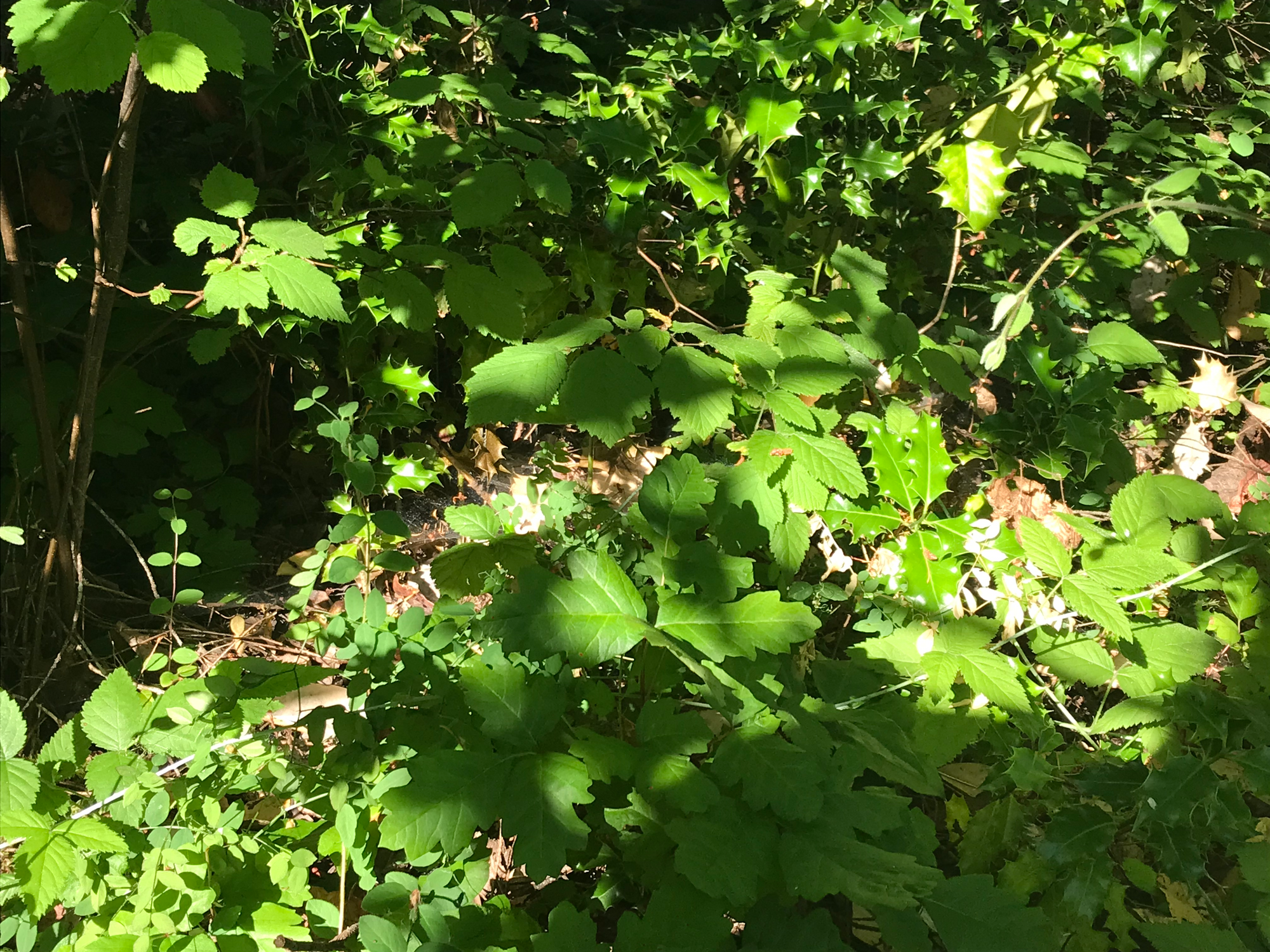
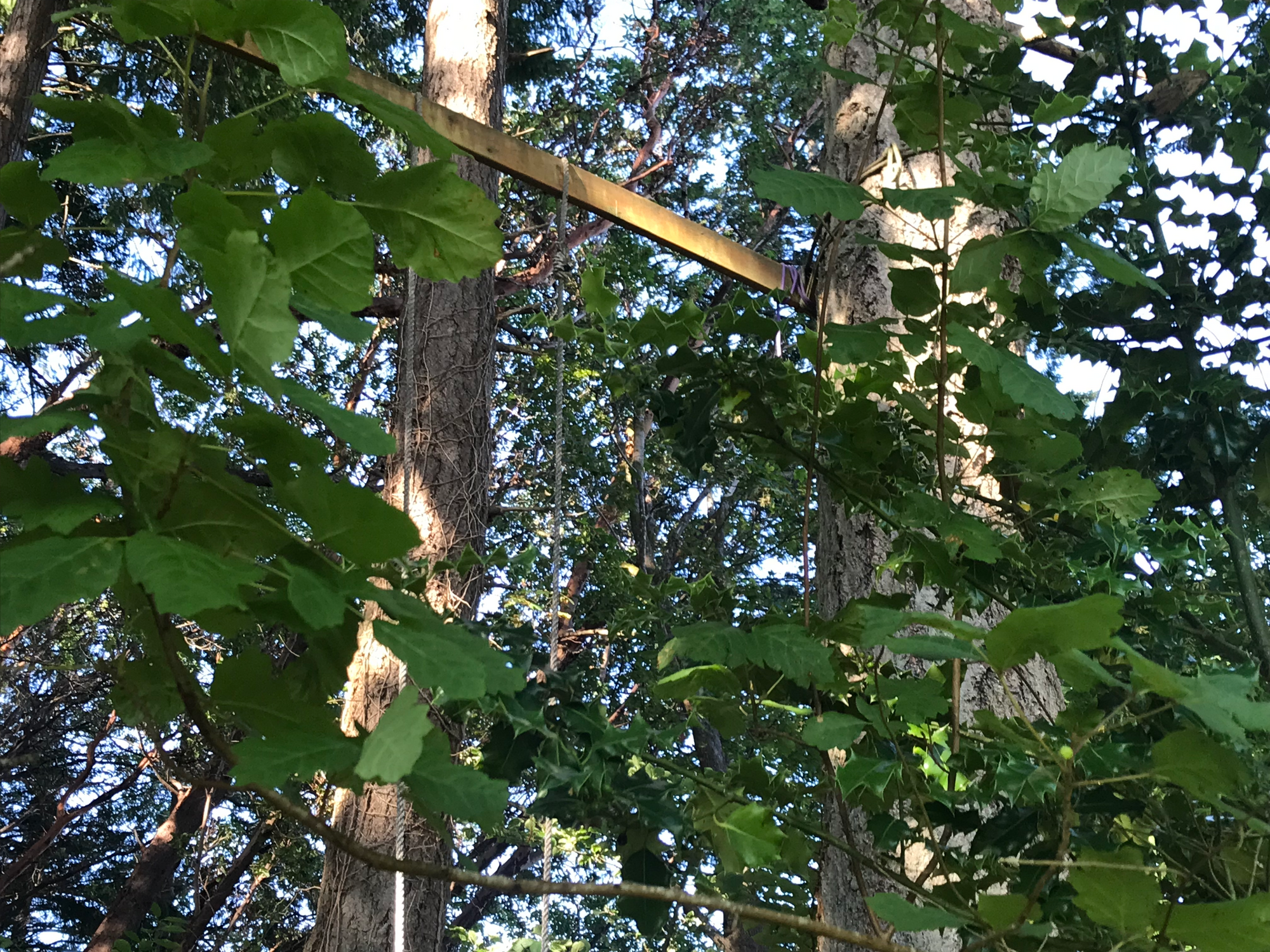
Ivy and Poison Oak
The ivy dominates the landscape, crawling into siding as well as wrapping around trees. And, although favored by some wildlife, poison oak growing as tall as a neighboring holly bush is very difficult for humans to coexist beside. As I prepared to pull, clip, and dig my way up the hillside, I also considered what I might want to purchase and plant to fill the anticipated clearing so that the invasives wouldn't just take over again. Salal, huckleberry bushes, Solomon's Seal, were all on my mental list of native species to plant once I had opened up the space.
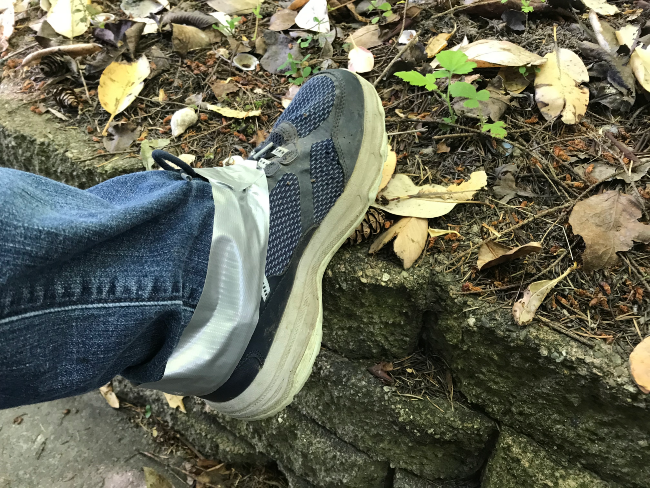
To avoid poison oak rashes, I put on a long-sleeved shirt and two sets of gloves, duct taped my sleeves to my gloves and my pant legs to my shoes, double bagged the removed poison oak, and had a gloved assistant on hand to help me when I was ready to call it quits for the day.
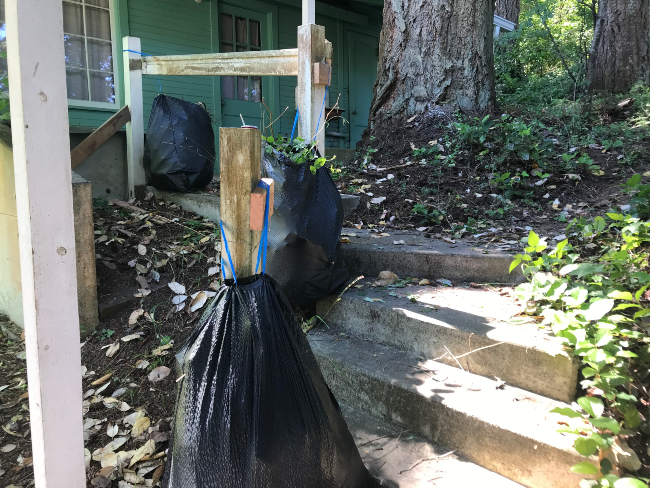
I filled trash bag after trash bag with the vines and poison oak that had taken over the hillside. I unwrapped trees that had been covered in heavy cords of invasive vine and gathered the deep layers of fallen branches into piles that could serve as wildlife habitats.
As I worked, I discovered, in delighted surprise, that instead of the bare dirt I expected to find underneath the carpet of greedy, invasive vines, there were struggling specimens of the very same native plants that I had thought I would need to purchase. I uncovered Salal, Solomon's Seal, and other natives, battling to survive under the ivy and ready to spring up and spread out if given more space, air, and sunshine in which to thrive.
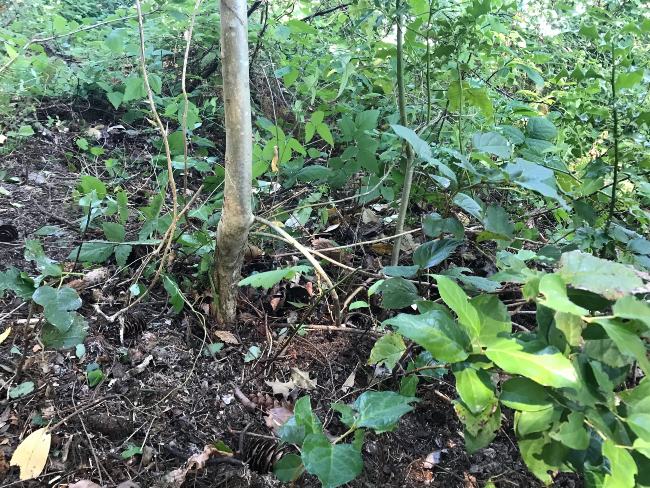
By Sea
A second delightful surprise occurred in the Puget Sound waters that lap the edge of the land a few hundred feet from our cabin. Daily, we see eagles, herons, swallows; the harbor is also home to several seals, and dolphins have been spotted occasionally (though not by me as yet). But this past week, almost every day, we were blessed by seal-eating orcas, sometimes one or two, sometimes as many as seven or eight in a pod. Having never before seen orcas in the South Sound bay area where our cabin is located, these visits to the area inlets and bays were astonishing, delightful, and community-forming.
We shared binoculars on the beach; people shouted updates from roadsides to decks and across fences; people sent texts to those away from the waterfront; allowances were even made for those who trespassed on private beaches and tidelands to view the passing pods. "Have you seen the orcas today?" became a regular conversation starter with people who looked like they were heading somewhere with intent in their eyes and steps. Everyone was exhilarated by the frequent orca sightings.
The day we saw two from our deck (in the video below) was a particular highlight and the nearest they had come to us.
Orcas near Dofflemyer Point
Watching them spout and flip their way across the little harbor was breathtaking, but as astonishing and wonderful as it was, our joy wasn't untainted.
Into that amazement fell some chagrin, as we watched a slew of boats tailing and occasionally pulling alongside the two orcas. As the orcas made their way further north (to the right in the picture), the flotilla increased and tightened as people gave in to the impulse to approach them more closely. It wasn’t enough to see the orcas from the shore or from the regulated distance, many wanted to be in the middle of the orca pod. Some boats intentionally put themselves into the path the orcas were taking. By the time the two orcas had made it most of the way across the harbor (I had stopped filming by then), they were encircled by more than a dozen boats filled with those who wanted to be in their midst. From my vantage point, there didn't seem to be an easy escape route from the surrounding circle of boats.
I thought, and heard others state later, that if we want the orcas to return, our welcome needs to include more space for them, to allow them to feel safety rather than stress. I know there was a lot of talk about this on social media and elsewhere, and my hope is that this was a beginner's mistake and area boaters will do better in the future, thinking not just about their own joyful excitement, but the negative excitement their actions are bound to have on the orcas.
It is a mistake we can easily fall into as humans—seeing and treating other creatures as mere implements for our own use and enjoyment, rather than living beings to respect and consider, which means giving space to them in their wildness. Whether it's through not considering what affect our presence has on another being, or not taking seriously the disruption we cause to their peace of mind, the pitfall of taking what we want without concerning ourselves with how it affects other creatures is something we have to constantly guard against as we are surrounded by constant assumptions of human preeminence and dominance.
Working to clear invasive plants has this in common with watching wildlife respectfully—they both have to do with creating space in which other parts of creation have room enough to thrive.
I would love to hear from you, either through the comment link below or directly through email at info@circlewood.online.
Louise
